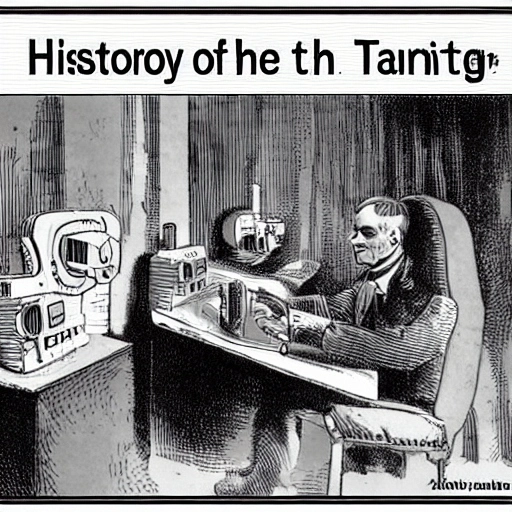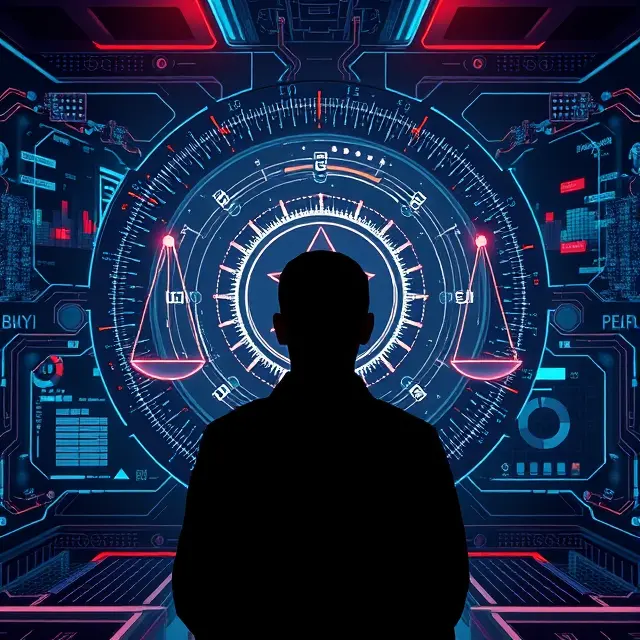The Turing test is a test done with the help of artificial intelligence to determine whether a computer is capable of thinking like a human.
This test is named after Alan Turing. He was an English computer scientist, cryptanalyst, mathematician and theoretical biologist. Turing suggested that if a computer can react like a human in certain situations, then it can be said to have artificial intelligence.
The actual Turing test requires 3 terminals. Each of these is different from the other two. One terminal is operated by a computer, while the other two are operated by humans.
A person plays the role of the questioner during the test. On the other hand, the respondent is another person and a computer.
Computers and humans are asked questions on a specific background and format of a specific subject.
After completing a set number of questions or time, the questioner has to guess which of the respondents is human and which is computer.
This test is performed many times. If the questioner can guess correctly half the time or less, the computer is considered to have artificial intelligence.
History of the Turing Test

The test is named after Alan Turing, who pioneered machine learning in the 1940s and 1950s.
In 1950, while at the University of Manchester, Turing first mentioned this test in his paper “Computing Machinery and Intelligence”.
The Turing Test is another version of “The Imitation Game”. There is no use of artificial intelligence in the actual game. Three people compete in three separate rooms, each room connected by a screen and keyboard.
Out of these three, one is a woman and one is a man. There is a judge, who can be a woman or a man. The female contestant tries to convince the judge that she is male, and the judge’s job is to figure out who is female and who is male.
Alan Turing incorporated artificial intelligence into the game. It involves artificial intelligence, a human contestant and a human judge.
The task of the questioner is then to figure out which is human and which is AI or artificial intelligence. Many AIs have passed this test since its inception. One of the earliest programs to pass was ELIZA, developed by Joseph Weizenbaum.
Limitations of the Turing Test
Touring test has been criticized for a long time. The reason for this is that historically the questions were asked in this test, so that the computer gets a chance to show human-like intelligence!
Computers can score well in this test only when the questioner tailors the questions to the computer. So in this test yes or no type of questions or questions on a specific topic. But when asked through open-ended questions or conversations, computer programs were rarely able to demonstrate human-like intelligence.
Besides, ELIZA was able to pass the Turing test simply by manipulating signals without understanding the program. Then the philosopher of language John Searle argued that the Turing test does not actually provide evidence of human intelligence.
Whether a computer passes the Turing test or not has become irrelevant to many researchers. According to them, instead of focusing on whether computers can talk like humans, the focus should be on how to make communication between humans and computers more efficient and intelligent. An example of this would be using a conversational interface.
Variations and Alternatives to Turing Test
A variety of variations have been introduced to make the Turing test more relevant. Such variations include:
Reverse Turing Test: Here the human tries to convince the computer that it is not a computer. An example of this is CAPTCHA.
Full Turing Test: Here the questioner tests the computer’s vision ability and ability to manipulate various objects.
Signal Test of Minimum Intelligence: It asks only true/false and yes/no questions.
Many alternatives to the Turing test were subsequently devised. Because the Turing test was flawed according to many. Such alternative tests include:
The Marcus Test: Here the computer program watches a television show. The computer was then asked meaningful questions about the television show.
The Lovelace Test 2.0: This test detects AI’s artificial intelligence by observing its ability to create art.
Winograd Schema Challenge: Here multiple-choice questions are asked in a specific format.
How is the Turing test being used today?
Although there are now various variations of the Turing test that are more suitable for artificial intelligence work, the original Turing test is still in use.
For example, since 1990, the Loebner Prize has been awarded annually by a panel of judges to the most ‘human-like’ computer.
This competition follows the rules of a typical Touring Test. Critics, however, underestimated the competition. To them, it is more of a campaign strategy than a test of the machine’s capabilities.
In 2014, the University of Reading organized a competition to mark the 60th anniversary of Turing’s death. Where a chatbot named Eugene Gustman passes the Turing Test. This chatbot impersonated a 13-year-old boy.
The chatbot managed to fool 33% of the judges. However, many excused that the number of judges was not enough and the test lasted only 5 minutes. Some also say that earlier machines performed better.
In 2018, Google Duplex successfully impersonated a human to fix an appointment with a hairdresser in front of 7,000 viewers. The person on the other end had no idea he was talking to a machine. Many see it as the modern-day Touring Test. However, the format given by Alan Turing is not being relied upon here.
GPT, the natural language processing model developed by OpenAI, is thought to have the best chance of passing the real Turing test of all the technologies currently available. However, many are criticizing GPT despite its advanced technology for generating text. Because if absurd questions are asked, GPT answers that too. So it will be difficult for GPT to pass the Turing test for such questions.
The current relevance of the Turing test is debated. There are also questions about whether its various competitions work. But the importance of the Turing test is still considerable from a philosophical place to talk about and research artificial intelligence at an early stage.
AI, Turing Test, Alan Turing, Machine Intelligence, Artificial Intelligence Evaluation, Chatbots, Human-Computer Interaction



One Comment